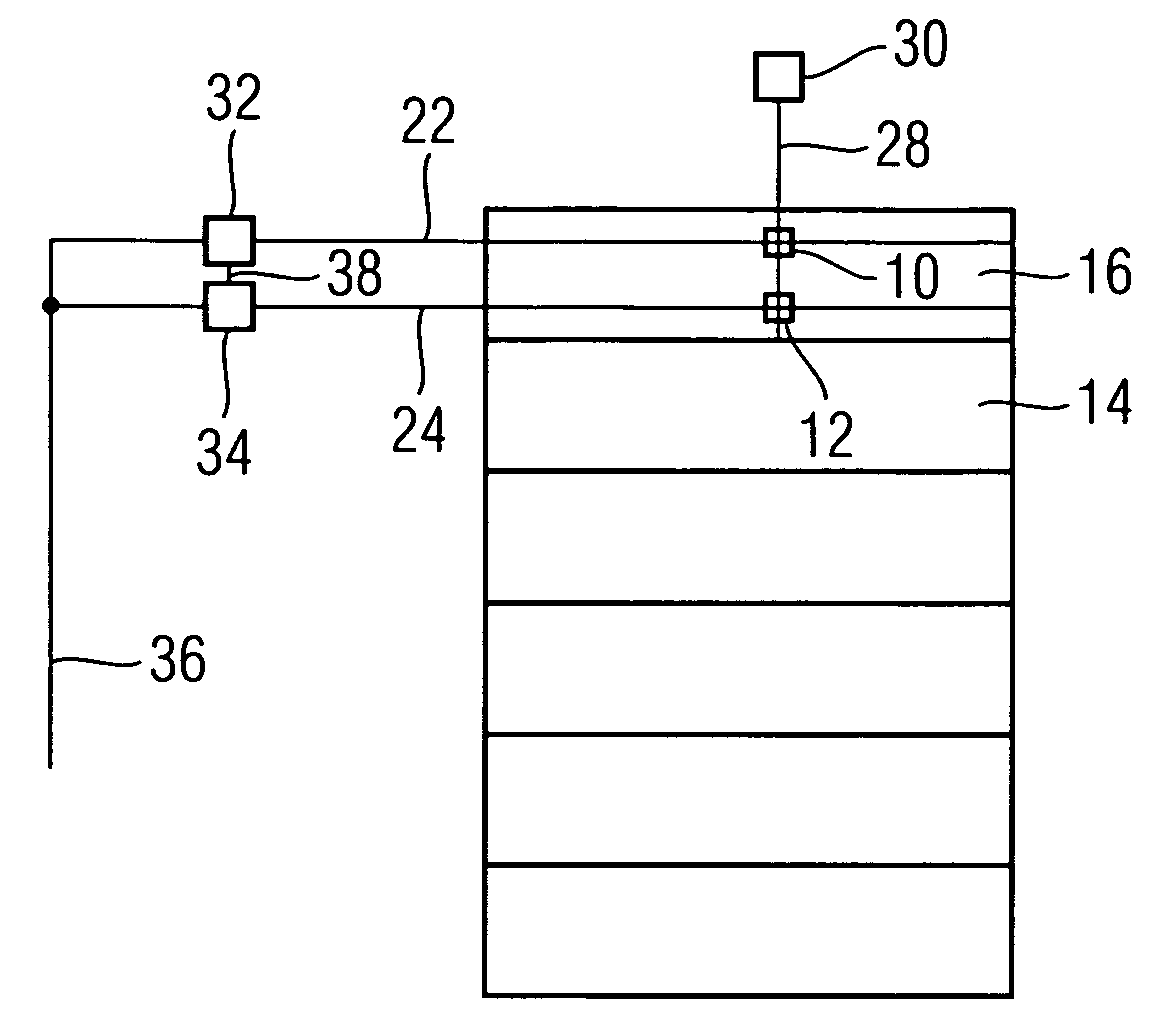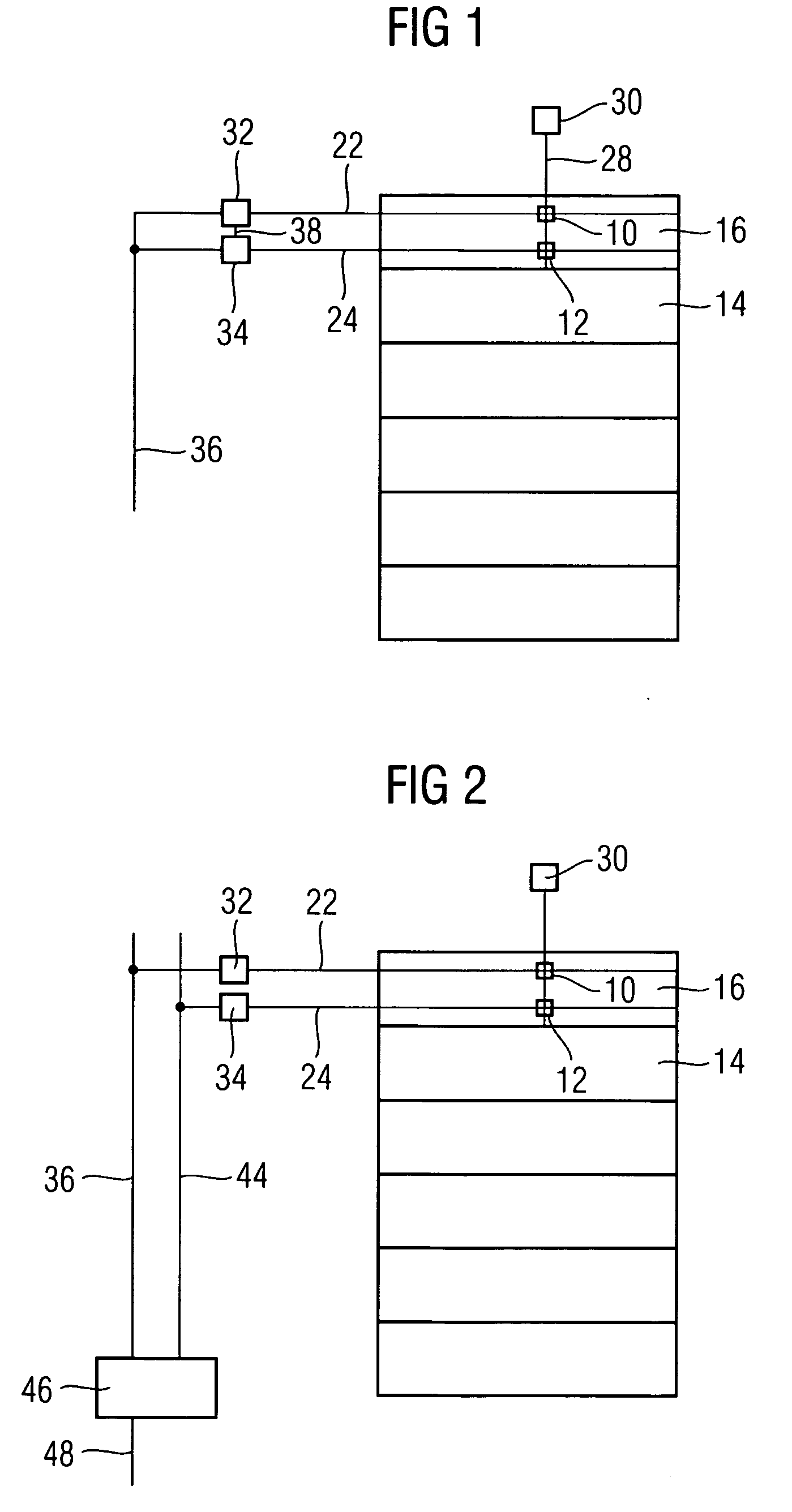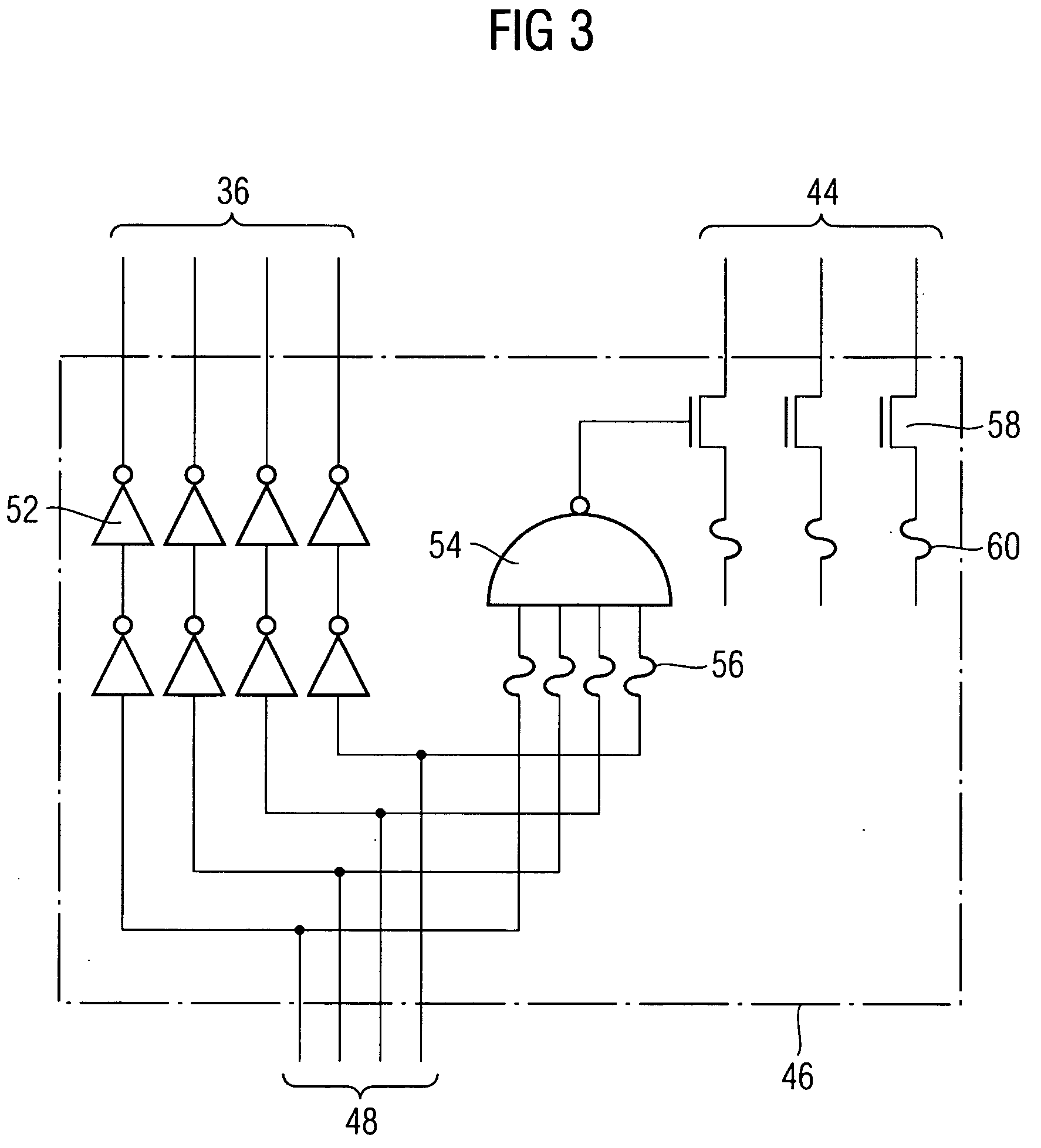Methods for repairing and for operating a memory component
a memory component and repair operation technology, applied in the field of memory components and repair operations, can solve the problems of reducing the linear dimension of memory components, in particular dram elements, and becoming increasingly difficult to develop cost-effective dram technologies, so as to maximize the refresh time of memory components, strengthen weak memory cells, and improve repair operations
- Summary
- Abstract
- Description
- Claims
- Application Information
AI Technical Summary
Benefits of technology
Problems solved by technology
Method used
Image
Examples
Embodiment Construction
[0036]FIG. 1 is a diagrammatic illustration of a memory component in accordance with the present invention. The memory component has a plurality of memory cells 10, 12 which are arranged in an array 14. To make the illustration clear, only two memory cells 10, 12 are illustrated although the array 14 may comprise overall a virtually arbitrary number of memory cells. The array 14 is subdivided into a plurality of blocks 16. Each block 16 comprises a plurality of word lines 22, 24 which are preferably essentially arranged parallel to one another or with few crossovers between one another. For clarity, only 2 of a total of, for example, a few 100 word lines are in turn illustrated in the first block 16.
[0037] A plurality of bit lines 28 intersect the word lines 22, 24, only one bit line 28 being illustrated in turn. Each memory cell 10, 12 is arranged at the crossover between a word line 22, 24 and a bit line 28. Activating a word line 22, 24 or applying an appropriate potential to th...
PUM
 Login to View More
Login to View More Abstract
Description
Claims
Application Information
 Login to View More
Login to View More - R&D
- Intellectual Property
- Life Sciences
- Materials
- Tech Scout
- Unparalleled Data Quality
- Higher Quality Content
- 60% Fewer Hallucinations
Browse by: Latest US Patents, China's latest patents, Technical Efficacy Thesaurus, Application Domain, Technology Topic, Popular Technical Reports.
© 2025 PatSnap. All rights reserved.Legal|Privacy policy|Modern Slavery Act Transparency Statement|Sitemap|About US| Contact US: help@patsnap.com



